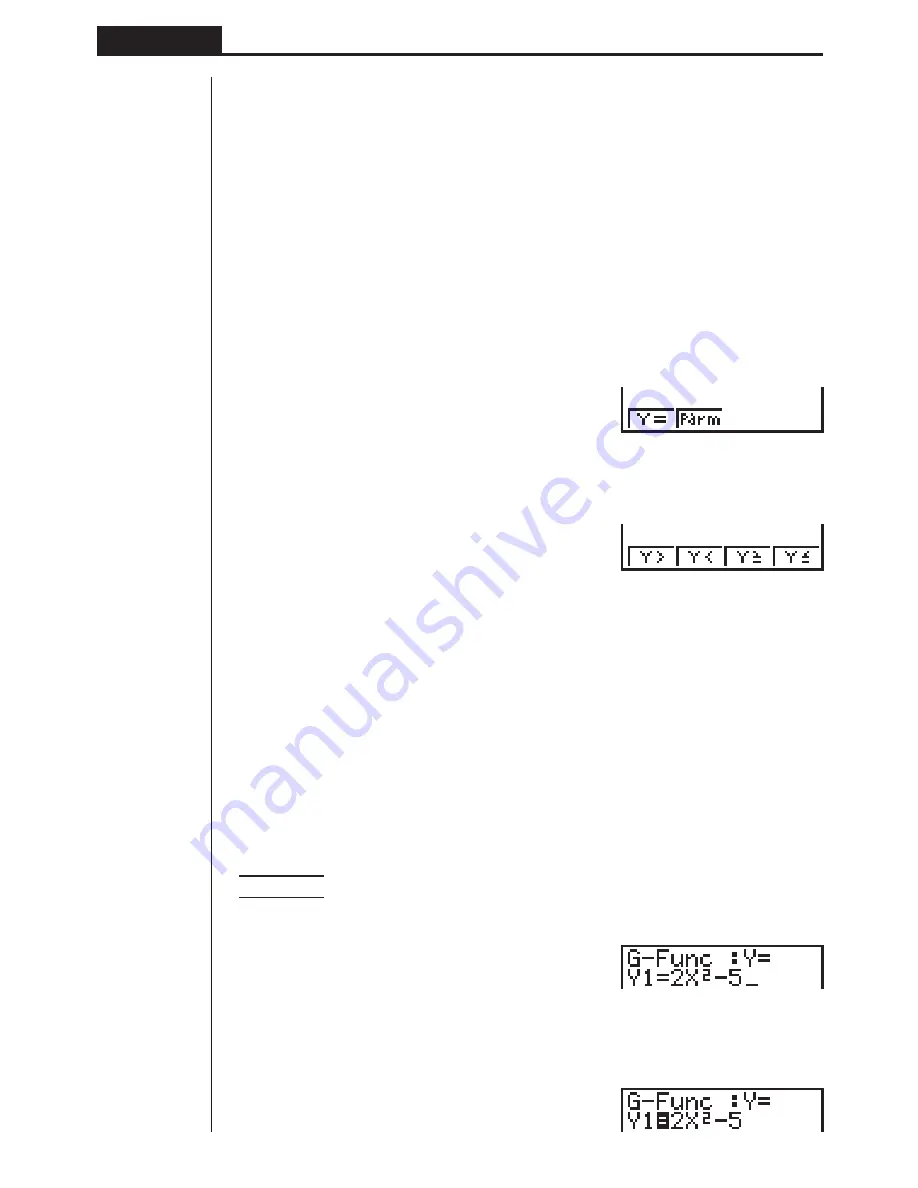
52
Chapter 4
Graphing
3. Graph Function Operations
You can store up to 10 functions in memory. Functions in memory can be edited,
recalled, and graphed. The types of functions that can be stored in memory are:
rectangular coordinate functions, parametric functions, and inequalities.
k
k
k
k
k
Specifying the Graph Type
Before you can store a graph function in memory, you must first specify its graph
type.
1. While the Graph Function Menu is on the display, press
[
to display a Graph
Type Menu.
[
1
(Y =) ......... Rectangular coordinate graph
2
(Parm) ...... Parametric graph
[
1
(Y >) ......... Y >
f
(
x
) inequality
2
(Y <) ......... Y <
f
(
x
) inequality
3
(Y
≥
) ......... Y
>
f
(
x
) inequality
4
(
Y
≤
) ......... Y
<
f
(
x
) inequality
Press
[
to return to the previous menu
2. Press the function key that corresponds to the graph type you want to specify.
k
k
k
k
k
Storing Graph Functions
u
u
u
u
u
To store a rectangular coordinate function (Y =)
Example
To store the following expression in memory area Y1:
y
= 2
x
2
– 5
[
1
(Y =)
(Specifies rectangular coordinate
expression.)
c
T
x
-f
(Inputs expression.)
w
(Stores expression.)
1
2
3
4
[
1
2
3
4
[
Summary of Contents for fx-7400G PLUS
Page 7: ... fx 7400G PLUS ...
Page 14: ...xii Contents ...
Page 57: ...Differential Calculations Chapter 3 ...
Page 176: ...162 Chapter 8 Programming ...
Page 188: ...Chapter 9 Data Communications 174 ...
Page 199: ...185 1 2 3 4 5 Program for Circle and Tangents No 4 Step Key Operation Display ...
Page 200: ...186 Program for Circle and Tangents No 4 Step Key Operation Display 6 7 8 9 10 ...
Page 201: ...187 11 12 13 14 15 Program for Circle and Tangents No 4 Step Key Operation Display ...
Page 202: ...188 16 17 18 Program for Circle and Tangents No 4 Step Key Operation Display ...
Page 205: ...191 1 2 3 4 5 Program for Rotating a Figure No 5 Step Key Operation Display ...
















































